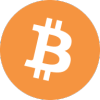Title: Nearly 75% of U.S. Households Report Being Financially "Okay" – A Deep Dive into Economic WellBeing Trends
Title: Nearly 75% of U.S. Households Report Being Financially "Okay" – A Deep Dive into Economic WellBeing Trends
Introduction
Recent data from the Federal Reserve’s Survey of Household Economics and Decisionmaking (SHED) reveals that approximately 75% of U.S. households describe their financial situation as "at least okay" or better. This statistic provides a snapshot of economic resilience amid inflation, rising interest rates, and postpandemic recovery. Below, we break down the findings, contributing factors, disparities, and implications for policymakers and economists.
Key Findings from the Survey
-
SelfAssessed Financial Health
75% of respondents rated their finances as "doing okay" or better (including "living comfortably" or "doing well").
25% reported struggling financially ("just getting by" or "finding it difficult to get by"). -
IncomeBased Breakdown
Highincome households (top 20%): ~90% reported financial stability.
Lowincome households (bottom 20%): Only ~50% felt financially secure. -
Racial and Ethnic Disparities
White households: 80% reported financial stability.
Black and Hispanic households: ~60–65% felt financially "okay," reflecting persistent wealth gaps. -
Age and Generational Trends
Older adults (65+): Highest financial confidence (~85%) due to retirement savings and Social Security.
Young adults (18–34): More likely to report financial stress (~30% struggling). -
Geographic Variations
Urban vs. rural: Urban households reported slightly better financial conditions, likely due to higher wages and job opportunities.Contributing Factors to Financial Stability
-
Strong Labor Market
Low unemployment rates (~3.7% in 2023) and wage growth have bolstered household incomes. -
Government Support Programs
Pandemicera stimulus, expanded Child Tax Credit, and SNAP benefits helped lowerincome families. -
Debt Management
Household debttoincome ratios remain stable, though credit card debt has risen due to inflation. -
Inflation Moderation
While inflation peaked in 2022, slowing price increases in 2023–2024 eased budget pressures.Persistent Challenges
-
Wealth Inequality
The top 10% of households hold ~70% of U.S. wealth, while the bottom 50% own just 2.6%. -
CostofLiving Pressures
Housing, healthcare, and education costs outpace wage growth for many. -
Emergency Savings Gaps
~40% of Americans cannot cover a $400 emergency expense without borrowing. -
Credit Reliance
Credit card delinquencies are rising, signaling financial strain among some households.Policy and Economic Implications
-
Need for Targeted Support
Expand affordable housing, childcare subsidies, and student debt relief to assist struggling groups. -
Workforce Development
Invest in job training to improve earning potential for lowwage workers. -
Inflation Mitigation
Monitor Federal Reserve policies to balance interest rates without triggering recession. -
Financial Literacy Programs
Improve access to resources for budgeting, saving, and debt management.Conclusion
While 75% of U.S. households feel financially stable, disparities by income, race, and age highlight uneven economic recovery. Policymakers must address structural inequities to ensure broader prosperity. Future surveys will track whether this trend holds amid global economic uncertainties.
Sources:
Federal Reserve SHED (2023)
U.S. Bureau of Labor Statistics
Pew Research Center
This structured analysis provides a comprehensive overview of the financial wellbeing landscape in the U.S., combining datadriven insights with actionable policy considerations. Let me know if you'd like additional details on specific segments!
转载请注明出处: TronLink官网下载-TRON-TRX-波场-波比-波币-波宝|官网-钱包-苹果APP|安卓-APP-下载
本文的链接地址: https://tianjinfa.org/post/2190
扫描二维码,在手机上阅读
文章作者:TronLink
文章标题:Title: Nearly 75% of U.S. Households Report Being Financially "Okay" – A Deep Dive into Economic WellBeing Trends
文章链接:https://tianjinfa.org/post/2190
本站所有文章除特别声明外,均采用 CC BY-NC-SA 4.0 许可协议,转载请注明来自TronLink !
文章标题:Title: Nearly 75% of U.S. Households Report Being Financially "Okay" – A Deep Dive into Economic WellBeing Trends
文章链接:https://tianjinfa.org/post/2190
本站所有文章除特别声明外,均采用 CC BY-NC-SA 4.0 许可协议,转载请注明来自TronLink !
打赏
如果觉得文章对您有用,请随意打赏。
您的支持是我们继续创作的动力!
微信扫一扫
支付宝扫一扫
您可能对以下文章感兴趣
-

TronLink 钱包:波场生态的得力助手
在当今的加密货币领域,波场(TRON)凭借其独特的技术和广泛的应用场景,吸引了众多投资者和开发者的目光。而 TronLink 钱包作为波场生态系统中一款重要的数字钱包,为用户提供了便捷、安全的数字资产管理和交易服务。本文将为你详细介绍 TronLink 钱包的官网下载方式以及其丰富的功能特点。 一、TronLink 钱包概述 TronLink 钱包又称波...
2025/05/04
-

TronLink 钱包:开启波场 TRON 生态的数字资产管理新体验
在区块链技术蓬勃发展的今天,波场 TRON 以其高效、低费用和强大的生态系统,在全球区块链领域占据重要地位。而 TronLink 钱包,作为波场生态的核心入口,为用户提供了安全、便捷且功能丰富的数字资产管理服务。无论是想要探索波场生态的 DApp,还是进行 TRX 及各类代币的存储与交易,TronLink 钱包都能满足你的需求。本文将详细介绍 TronLin...
2025/05/04
-

波场TRON与vSport达战略合作 开启足球区块链新纪元
2025/05/06
-

TronLink官网下载指南:TRON(TRX/波场/波币/波宝)钱包官方APP下载
2025/05/05
-

TronLink官网下载指南:TRON(TRX)波场钱包安全获取方式
2025/05/05
-

TronLink官网下载指南:TRON(波场)钱包全方位解析
TRON(波场)作为全球领先的区块链平台之一,其生态内的TRX(波币)及相关代币广受欢迎。而TronLink作为TRON官方推荐的钱包,是管理TRX、参与波场DApp、进行质押和交易的首选工具。本文将详细介绍TronLink官网下载方式,涵盖苹果APP(iOS)和安卓(Android)版本,并解析其核心功能及使用技巧。 🔹 TronLink钱包简介 Tr...
2025/05/04
-

TronLink官网下载指南|TRON(TRX)波场钱包|苹果/安卓APP安装教程
2025/05/05
-

TronLink官网下载指南:TRON(TRX/波场/波币/波宝)钱包官方APP(苹果/安卓)
2025/05/05
-

TronLink官网下载|TRON(TRX)波场钱包官方指南
2025/05/05
-

TronLink官网下载指南:TRON(TRX)波场钱包全方位解析
什么是TronLink钱包? TronLink是目前TRON(波场)生态中最受欢迎的数字钱包之一,支持TRX(波币)及所有TRC标准代币的存储、转账和交易。作为波场官方推荐钱包,TronLink为用户提供了安全、便捷的区块链资产管理体验。 TronLink钱包核心功能 多平台支持:提供浏览器插件版、iOS和Android移动端应用 资产管理:安全存储TRX及...
2025/05/04


 TronLink
TronLink 
 比特币价格
比特币价格